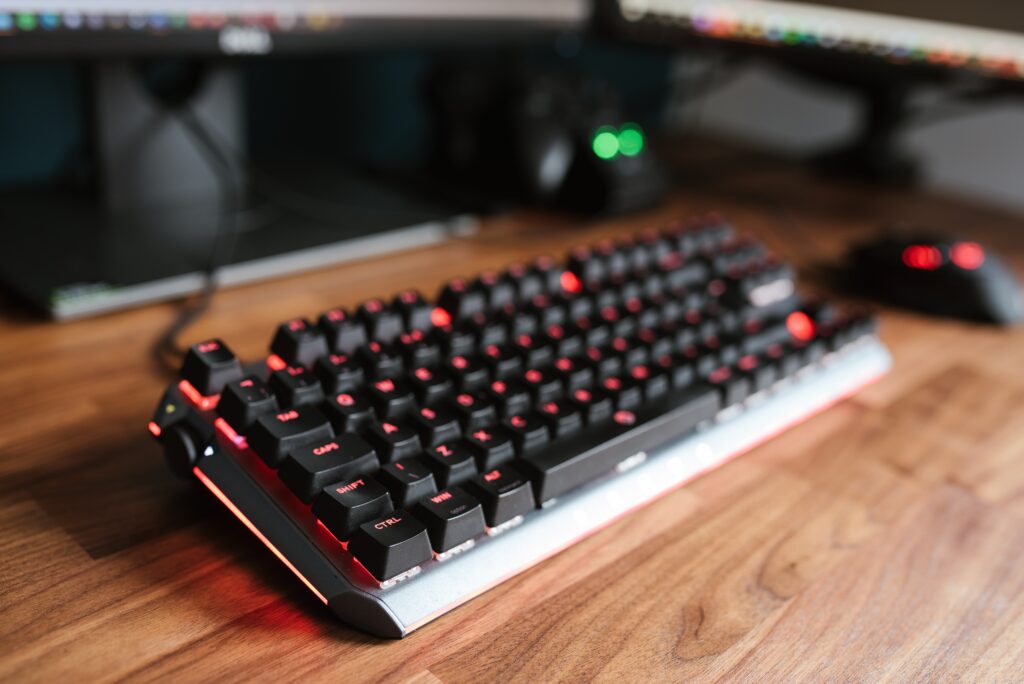
Are you ready to take your user experience design skills to the next level? With so many new developments in user interface devices, it can be difficult to know where to start. This blog post will guide you through the process of mastering the art of interaction – understanding effective user interface device technology and how these devices impact your end-users experience. We’ll consider various techniques for creating a more intuitive user experience, explore modern UI device hardware such as touchscreens and tactile interfaces, and discuss best practices for designing successful apps or websites with an easy-to-use interface. Read on to get a comprehensive overview of all things related to UI device design!
A User Interface Device, commonly referred to as a UID, is a type of electronic device that allows users to interact with their computer systems. These devices come in several different forms, such as a keyboard, mouse, or touchpad. However, no matter the type, they all work similarly. The UID is connected to the computer system through a cable or wireless connection, and as the user interacts with the device, it sends a signal to the computer system. This signal is then translated into a language code that the computer can understand, which triggers an action on the system. Without a UID, interacting with a computer would be nearly impossible, highlighting the importance of these devices in our daily lives.

In today’s digital age, there are various user interface devices available that allow us to interact with our electronic devices – from touchscreens to mice and keyboards. Each type of device has its unique way of operating and makes it convenient for the user to operate the system in their preferred way. With touchscreens, one can simply tap the buttons and swipe across the screen to perform their desired tasks, while voice recognition systems have made it possible to control the device using voice commands. At the same time, traditional devices such as keyboards and mice have stood the test of time, proving to be reliable and convenient means of input. All in all, different types of UIDs have evolved to cater to the growing demands of users, providing an intuitive and enjoyable experience.
Designing an effective user interface for your application is crucial to the success of any software. A well-designed user interface creates a positive user experience that will keep users coming back to your application time and time again. When designing your user interface, you should consider the needs and preferences of your users. Focus on making your application intuitive and easy to use, while ensuring that it provides all of the necessary features and functions. Simplicity is key, so avoid cluttering your interface with unnecessary buttons and graphics. Use clean, clear layouts and typography to make your application appealing and user-friendly. By prioritizing user experience in your design process, you can create an interface that will maximize the engagement and satisfaction of your users.
Today, creating a user-friendly experience is no longer a nice-to-have, but a must-have. For businesses to stay competitive and retain their user base, they need to create an experience that is not only easy to navigate and functional, but one that delights and leaves a lasting impression. To achieve this, businesses must focus on factors such as simplicity, accessibility, consistency, and responsiveness, among others. These best practices go a long way in ensuring an enjoyable and seamless user experience and are crucial in establishing customer loyalty. Whether designing a website, mobile app, or any other digital product, incorporating user-friendly design principles will make all the difference in the success and longevity of the product.
Designing an effective user interface is no easy feat. It requires careful consideration of the needs and behaviours of your users. That’s why it’s crucial to follow certain key principles of user interface design to ensure that your product is intuitive and easy to use. But how do you know if your design is actually working? That’s where usability testing comes in. By observing and gathering feedback from real users, you can identify any pain points or areas for improvement. The importance of usability testing cannot be understated – it can mean the difference between a successful product and one that gets left by the wayside. So, when it comes to designing user interfaces, remember to place equal emphasis on both the principles that guide your design and the testing that validates it.

When it comes to interaction design, some of the biggest names in tech have set the bar high. Apple’s intuitive multi-touch interface revolutionized the way we interact with our devices, while Microsoft’s Windows 10 interface seamlessly integrates touch, keyboard, and voice inputs. Google’s clean and minimalistic Material Design language has become synonymous with modern mobile app design. Each of these tech giants has found success by putting user experience front and center, creating designs that prioritize simplicity, ease of use, and accessibility. From the colorful icons on our home screens to the way we navigate through our devices, these companies have shown us that interaction design is more than just a feature — it’s a critical component of our digital lives.
In summary, the user interface is an integral part of any software application and plays an important role in providing users with a positive experience. For this reason, designing an effective user interface should be a priority when developing any application. Different types of UIDs work differently and must be designed accordingly to meet user needs. Best practices for design include using simple language, creating clear calls to action, and testing usability to ensure accuracy and reliability. Following key principles such as visual hierarchy, conciseness, and consistency definitions make up a well-designed interactive interface. The most successful applications are those that demonstrate excellence in both design and functionality—Apple, Microsoft, and Google are all prime examples of tech giants who have mastered the balance between the two. With these points in mind, it’s time to get started on designing your own user interface solution. Take advantage of expert resources like blogs or courses available online to assist you in streamlining your user experience design process.